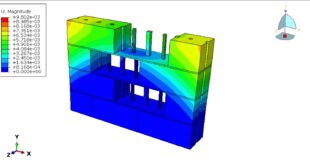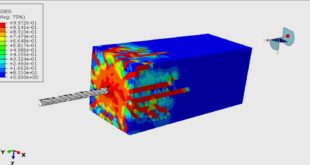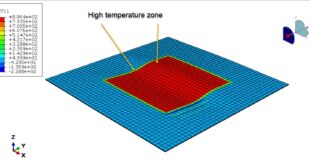Nowadays, a high risk of terrorist attacks is observed. Bombing attacks are the most frequent terrorist activities. Unfortunately, public infrastructure such as airports and railway stations, shopping centres, offices, financial and government institutions are highly exposed to such attacks. There were also several cases of such attacks with thousands of victims in Europe (Madrid 2004 and London 2005). Blast loading of the critical supporting elements of public facilities can cause considerable reduction of its carrying capacities, as well as partial or global collapse of the building. Progressive collapse took place during Oklahoma City bombing, where 87% of deaths were caused not by the direct effects of the blast over pressure but by the subsequent collapse of a significant part of the building, as a result of the reduced load-carrying capacity of the structural system. In the numerical studies of blast wave interaction with structures, Finite Element Method (FEM) is the most common approach to assess the structure response. Two main types of methods of blast loading numerical simulation can be distinguished: the application of pressure loading, such as Conwepand the description of detonation, blast wave propagation in fluid domain and fluid structure interaction, e.g. Computational Fluid Dynamic methods (CFD) or Multi Material Arbitrary Lagrangian Eulerian formulation (MM-ALE). It is also possible to assess the structure response caused by the blast wave using simple methods, namely, single or multi degree of freedom methods.
In this simulation to model all parts. three dimensional space has been used. To model a correct behavior between concrete slab and CFRP, EPOXY GLUE as solid part with thin thickness has been implanted. CDP model for concrete,elastic plastic model for beams,Hashin’s damage criterion with engineering constant for CFRP and elastic material with traction method and QUADS damage behavior with evolution for Epoxy as joint has been used. You can see a figure about the position of part at below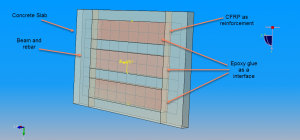
Dynamic explicit procedure is appropriate for this type of analysis. To model a perfect contact between epoxy-concrete and epoxy-CFRP,tie constraint is used because of the thin glue layer. CONWEP process is used to model explosion phenomenon. During the simulation and after the effect of wave over the wall , the epoxy separated from concrete wall and it’s experienced a huge deformation. You can see some results of this simulation at below
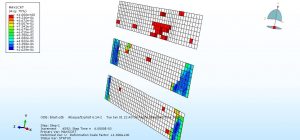
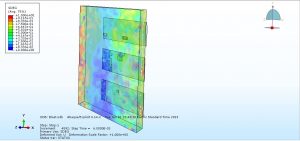
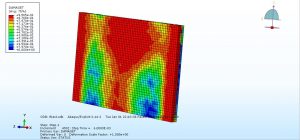
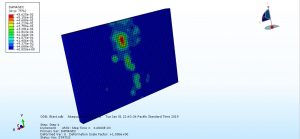
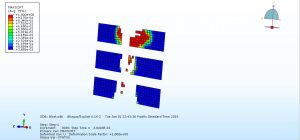
You can provide CAE ,INP,and English video files of this simulation here. The cost of these files is Twenty-Six Euros. you can click on the bellow bottom to beginning process
You can purchase the tutorial through a PayPal account, a Visa, or a Master card, just before payment,send me an email to this address: karampourp@gmail.com
 Abaqus tutorials Abaqus tutorials
Abaqus tutorials Abaqus tutorials
